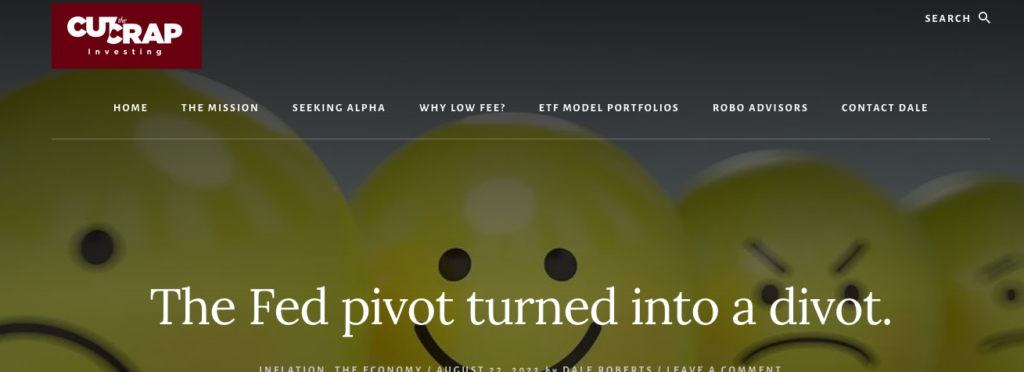By Dale Roberts, cutthecrapinvesting
Special to the Financial Independence Hub
It was a long time in the making, but I recently finished and posted the stock portfolio for retirees, on Seeking Alpha. It uses an all-weather portfolio approach but only puts stocks to work. Stocks are arranged by sector to perform in certain economic environments. Stocks and REITs will have to step up to do the work of bonds, gold, cash and commodities. We’re building the retirement stock portfolio on the Sunday Reads.
Here’s the post – Stocks for the retirement portfolio. That is a U.S. version. I will also post the Canadian stock portfolio (ideas for consideration) on Cut The Crap Investing.
Defense wins ball games
The key is a core defensive stance: for market corrections, recessions and deflation. For those who are not able to access Seeking Alpha, here’s the portfolio.
As always, this is not advice. This is an idea and strategy for consideration.
Defensives @ 60%
Utilities – 10%
NextEra Energy, Duke Energy Corp, The Southern Co, Dominion Energy, Alliant Energy, Oneok, WEC Energy.
Pipelines – 10%
Enbridge, TC Energy, Enterprise Partners, Energy Transfer, Oneok.
Telecom – 10%
AT&T, Verizon, Comcast, T-Mobile, Bell Canada, Telus.
Telco REITs – American Tower, Crown Castle.
Consumer Staples – 10%
Colgate-Palmolive, Procter & Gamble, Walmart, Pepsi, Kraft Heinz, Tyson Foods, Kellogg, Kroger, Hormel Foods, Albertsons Companies.
Healthcare – 10%
Johnson & Johnson, Abbott Labs, Medtronic, Stryker, CVS Health, McKesson Corporation, United Health, Merck, Becton Dickinson, Cigna Corp.
Canadian banks – 10%
RBC, TD Bank, Scotiabank, Bank of Montreal.
Growth assets – 20%
Consumer discretionary, retailers, technology, healthcare, financials, industrials and energy stocks.
Apple, Microsoft, Qualcomm, Texas Instruments, Nike, BlackRock, Alphabet, Lowe’s, Amazon, TJX Companies, McDonald’s, Tesla, Visa, Mastercard, Raytheon, Waste Management, Berkshire Hathaway, Broadcom.
Inflation protection – 20%
REITs 10%
Agree Realty Corporation, Realty Income, Essential Properties, Regency Centres Corporation, Stag Industrial, Medical Properties Trust, Store Capital Corporation, Global Self Storage and EPR Properties.
Oil and gas / commodities stocks 10%
Canadian Natural Resources, Imperial Oil, ConocoPhillips, Exxon Mobil, Chevron, EOG Resources, Occidental Petroleum, Devon Energy.
Agricultural
Nutrien, The Mosaic Company.
Precious and other metals
Tech Resources, BHP Group, Rio Tinto
All said, I am still a fan of some cash and commodities and bonds. This was offered in the post …
The hybrid approach might then include:
- 5% cash
- 5% bonds
- 5% commodities
- 85% retirement stocks






